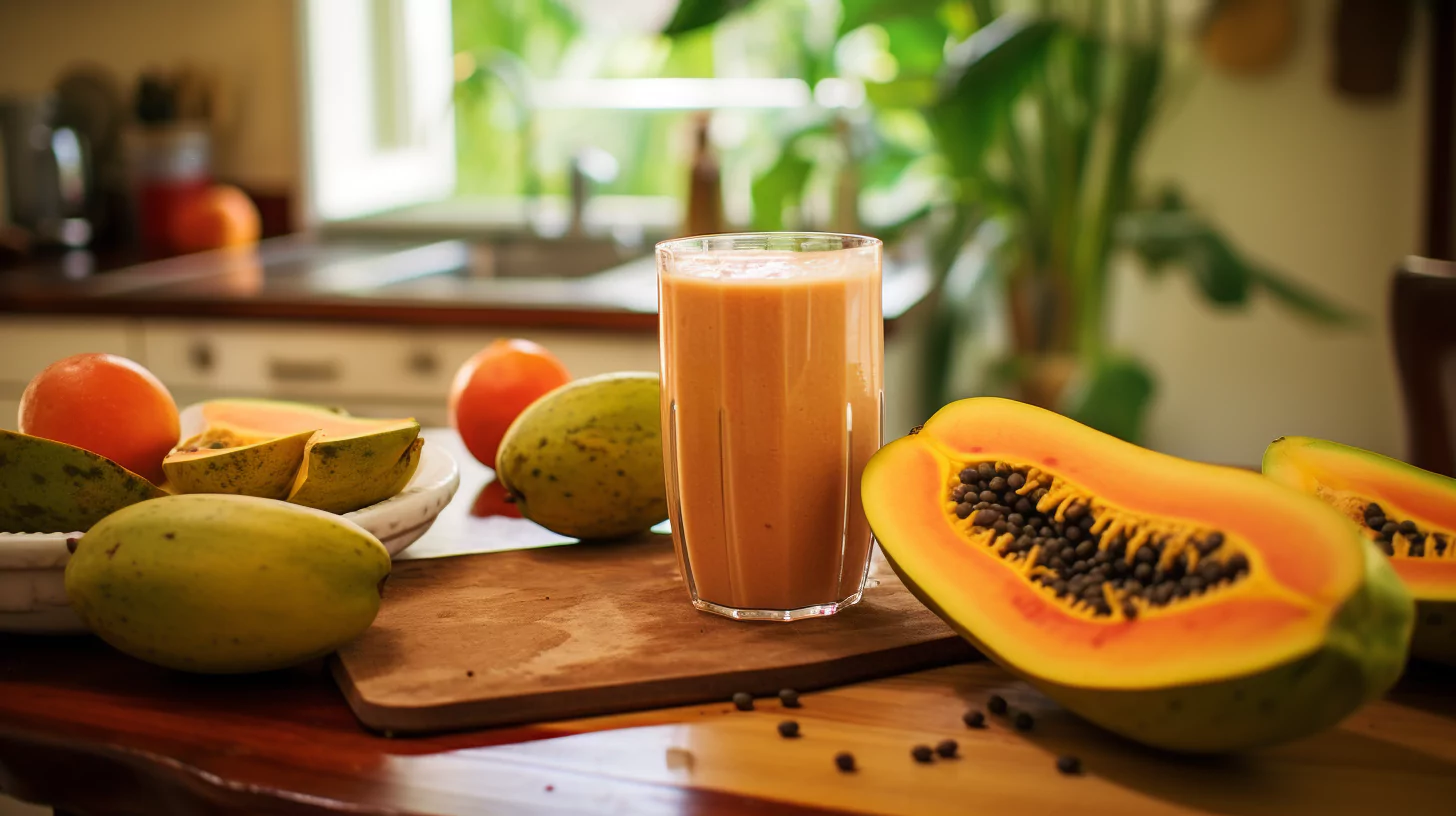Chances are, you’ve grappled with digestive discomfort, bloating, stomach pangs, and all else that comes with eating. Aside from popping some antacids or chugging down some Pepto Bismol, what can be done about it?
Three words: the right foods.
It’s about more than just satisfying your hunger. The best foods for gut health heal, balance, and rejuvenate.
“As we focus on foods we should be eating,” says Janelle Connell, RDN, a registered dietitian at Viome, “those foods often gradually crowd out some of the foods we shouldn’t be eating.”
8 Best Foods for Gut Health, According to Experts
When it comes to nourishing your gut, some foods reign supreme for their health benefits. They’re allies of your digestive system, promoting a balanced and vibrant digestive ecosystem.
So what foods promote a healthy gut microbiome? Turning to the experts at Viome, a company that leverages AI for in-depth gut microbiome analysis, here’s a roundup of gut-friendly foods you can check out:
- Whole grains. Enjoy a variety of whole grains like quinoa, oats, and brown rice, which are high-fiber foods that are essential to your diet.
- Legumes. Lentils and chickpeas are not only rich in protein but also contain important dietary fibers.
- Leafy greens. Arugula and Swiss chard are nutrient powerhouses, packed with vitamins and minerals.
- Fruits. Apples and bananas are great choices for natural sugars and are also a good source of dietary fiber.
- Fermented foods. Yogurt and sauerkraut bring a dose of probiotics into your daily diet.
- Fiber-rich veggies. Artichokes and fennel are excellent sources of fiber and other nutrients.
- Omega-3 fatty acids. Incorporate salmon and flaxseeds into your meals for these essential fats.
- Herbs and spices. Ginger and turmeric add flavorful complexity to dishes and come with their own unique properties.
By choosing these foods, you’re equipped with a diverse palette to create a balanced and nutrient-rich meal plan.
8 Best Foods for Gut Health and Weight Loss
Selecting the right foods can support your microbiome and help shed unwanted pounds. So here’s a list for a better gut health diet:
- Oats. Start your day with oats to fuel up with energy that lasts, helping you avoid snacking impulses.
- Quinoa. This versatile grain can be a satisfying base for any meal, keeping hunger at bay with its protein and fiber content.
- Greek yogurt. A creamy and filling snack, Greek yogurt has gut-healthy probiotics and a boost of protein to help curb cravings.
- Chicken. Incorporating this meat into meals provides lean protein that helps build muscle mass, which is key for burning calories.
- Tofu. This low-calorie protein source can keep you full and satisfied, preventing overeating.
- Eggs. A nutrient powerhouse, eggs can make for a filling breakfast and help reduce calorie intake later in the day.
- Cottage cheese. Opt for cottage cheese as a snack or part of a meal for a light yet protein-rich option.
- Leafy greens. Fill your plate with leafy greens to add volume to your meals without the extra calories, helping to manage weight effectively.
This list is a great start to a microbiome diet. As Janelle highlights, “We’ve all been there when we’ve started to diet, and someone says, ‘You can’t eat that anymore,’ and then it’s all you think about and all you want. Let’s get out of that kind of mindset and start with the foods we should eat.”
5 Best Fermented Foods for Gut Health
Fermentation, a process steeped in history, has been scientifically acknowledged for its benefits. One study published in Nutrients, for example, highlights that fermented foods are abundant in probiotics that enhance the gut’s microbial diversity and resilience.
Here are some of the best probiotic foods for gut health to consider:
- Yogurt. Choose plain, unsweetened varieties and personalize them with your favorite fruits and nuts.
- Sauerkraut. Opt for the unpasteurized kind, often found in the refrigerated section, to ensure live probiotics.
- Tempeh. A hearty substitute for meat that’s both filling and rich in nutritional value.
- Kefir. A drinkable option for those on the go, offering a wide array of probiotic strains.
- Pickles (in brine). Look for the “naturally fermented” label to enjoy the crunch with a dose of good bacteria.
When you’re including these fermented foods in your diet, it’s helpful to have a variety of them to ensure that you get a variety of probiotic strains, according to Janelle. This helps “foster a diverse gut microbiome,” which is associated with a healthy gut.
What Foods Should I Avoid for a Healthy Gut?
While it’s natural to focus on the best foods to eat for gut health, it’s equally important to be aware of those that may impede it. Certain items on your shelves, despite their familiarity, might be the very things undermining your efforts, ultimately affecting the gut-brain connection.
Let’s clear the air (and the pantry) of these offenders:
- Sweeteners. The likes of agave nectar, aspartame, corn syrup, sucralose, and white sugar are better off avoided.
- Sugary drinks. Fruit juices, sports drinks, and sodas can be high in sugars or sweeteners that do no favors for your gut.
- Processed oils. Steer clear of canola oil, hydrogenated vegetable oil, shortening, and margarine.
- Refined grains. White flour as well as flavored, sweetened oatmeal are far from the best choices for your gut.
- Packaged foods. If the ingredient list reads like a science experiment, it’s probably not conducive to gut health.
- Processed meats. Items like cured meats, bacon, and hotdogs are known to cause more harm than good.
These foods can cause harmful activities in the body, like experiencing gas, bloating, or inflammation. So cutting them out is a step towards creating a hospitable environment for beneficial gut flora.

Frequently Asked Questions
Curiosity is the first step towards knowledge, especially when it comes to your health. Turning to Janelle and the Viome team for their expertise, here are answers to some common questions about what foods are best for gut health.
1. What foods improve digestion?
This is individual, based on the state of your personal microbiome, according to Janelle. But a few of the best foods for gut health and digestion to consider are:
- Dandelion greens. With their naturally bitter taste, dandelion greens stimulate the digestive system, encouraging the production of digestive juices for better nutrient absorption.
- Papaya. This tropical fruit is packed with papain, an enzyme that aids in protein digestion, making it a delicious ally for your stomach.
- Ginger. A root with a reputation, ginger not only aids gastric motility but also brings its anti-inflammatory prowess to calm your digestive tract.
- Peppermint. The soothing qualities of peppermint make it a go-to for easing gastrointestinal discomfort and managing IBS symptoms.
- Fermented foods. A category in itself, yogurt, sauerkraut, and miso are probiotic foods that assist in breaking down complex carbs and enhancing nutrient uptake.
- Fennel. Beyond its fibrous nature, fennel contains elements that relax digestive muscles, providing relief from gas and bloating.
Exploring these foods is like discovering a secret menu for optimal wellness. They not only add vibrancy to your plate but also offer a culinary journey that supports your body’s natural rhythms, enhancing your daily life with every bite.
2. What foods boost immunity?
Your immune system serves as your personal line of defense. Just as any robust defense system necessitates the right kind of support.
Notably, there’s a comprehensive list of foods that equip the immune system with the essential vitamins, minerals, and other nutrients it requires. Highlighting a few, consider:
- Oranges and strawberries, rich in vitamin C.
- Broccoli, a dependable source of this crucial vitamin.
- Spinach, carrots, and apricots, all abundant in beta-carotene.
- Onions and garlic, recognized for their prebiotic content.
- Asparagus, another vegetable high in prebiotics.
- Unsweetened yogurt and certain cheeses, celebrated for their probiotic content.
- Kombucha and kefir, popular fermented drinks brimming with probiotics.
No doubt, a balanced diet rich in high-quality nutrients helps ensure your immune system operates at its best. Yet, the reality is, you might not be getting all the nutrients you need. This is where supplements come into play, bridging the nutritional gaps to bolster your immunity.
When you take such a proactive approach to your health, it can lead to fewer sick days and allow you to enjoy life to the fullest.
3. What are some easy, gut-friendly recipes?
Eating foods to improve gut health doesn’t necessarily mean hours in the kitchen or a degree in culinary arts. It could also mean simple, flavorful combinations that work synergistically for your health.
The team at Viome has some great, simple recipes that take no longer than 20 minutes to make.
1. Ginger soup
A warm and comforting recipe that’s perfect to restore gut health with every spoonful.
Ingredients
1 tablespoon olive oil
1 medium onion, chopped
3 cloves garlic, minced
1 tablespoon fresh ginger, grated
1 bay leaf
4 cups low-sodium chicken bone broth (or vegetable broth if preferred)
2 carrots, sliced
2 celery stalks, sliced
1 cup of your favorite Superfood vegetables, chopped
1 cup sauerkraut, kimchi, or your preferred fermented vegetable
Salt and pepper to taste
Fresh parsley for garnish (optional)
Squeeze of lemon
Instructions
- In a large pot, heat the olive oil over medium heat.
- Add the chopped onion and sauté until translucent.
- Add the minced garlic and grated ginger. Sauté for another minute until fragrant.
- Place the bay leaf in the pot and pour in the broth.
- Bring to a gentle simmer.
- Add the sliced carrots and celery to the pot.
- Simmer for another 10–15 minutes, or until the vegetables are tender.
- Stir in your superfood vegetables and cook until desired texture.
- Season the soup with salt and pepper to taste.
To serve, ladle the soup into bowls. Top each bowl with sauerkraut, kimchi, or your preferred fermented food.
Garnish with parsley and/or a squeeze of lemon, if desired.
2. Golden sauerkraut
Savory and rich, this vibrant sauerkraut brings a colorful and nutritious twist to your gut-friendly repertoire.
Ingredients
1 head organic green cabbage, finely sliced or shredded (reserve the outer cabbage leaf)
Fine sea salt
1-inch knob of turmeric, peeled and grated
1 teaspoon cumin seeds
Instructions
- Add cabbage and cumin seeds to a bowl. Weigh the mixture in grams using a kitchen scale, being careful not to weigh the bowl. Multiply the weight of the cabbage in grams by 0.02. This is the amount of salt you will need, in grams.
- Add the salt. Mix and massage the cabbage well with your hands.
- Add the turmeric and mix using a spoon (turmeric will stain your hands and fingernails).
- Allow the mixture to sit for several hours (about 2–6 hours) while the moisture draws out. Stir occasionally.
- Stir the sauerkraut again, and then place it in a large glass jar. Pack it down into the jar well using a sauerkraut tamper, your hands, or the end of a wide spoon. Pack well so that the liquid (aka brine) covers the contents. If the brine does not cover the contents, add an additional 2% brine (1 ¼ teaspoons salt to 1 cup water) and add enough to the jar to cover all the cabbage.
- Fold the reserved outer leaf of the cabbage and place it on top of the sauerkraut to help keep it below the brine. The salt in the brine prevents oxidation and the growth of molds.
- Place a fermentation weight, small jar, or ziplock bag filled with water on top of the cabbage leaf to help keep the mixture pressed down.
- Cover loosely with a lid and place in a warm place (preferably around 68–75°F) for about 3–5 days. “Burp” the jar daily to release any pressure buildup.
- The fermentation will occur faster if the jar is in a warmer place than in a colder place. When you start seeing some bubbles, this means it’s getting close. You can start tasting the sauerkraut around day 3. Once it has reached your desired level of sour flavor and softness, place the jar in the fridge to stop or slow the fermentation.
- Sauerkraut stores well in the fridge for up to 6 months. Continue to burp the jar occasionally to release any pressure buildup.
Notes
- Sauerkraut is typically made using a 1.5–3% brine. You may use more or less salt in step 1, as long as it is within 1.5–3%.
- Using organic cabbage is critical for sauerkraut. Some pesticides can kill the microbes naturally present in the cabbage that promote fermentation.
- If you’re using a particularly large head of cabbage, more turmeric and cumin seeds can be added without affecting the fermentation process.
3. Fennel and citrus salad
A dish rich in polyphenols, which are the body-loving compounds in fennel that can help rejuvenate and protect your cells.
Ingredients
For the vinaigrette:
3 tablespoons extra virgin olive oil
1 tablespoon apple cider vinegar
1 tablespoon fresh squeezed orange juice
1 teaspoon Dijon mustard
¼ teaspoon salt
¼ teaspoon ground black pepper
For the salad:
2 fennel bulbs, shaved into thin slices (use a mandoline)
2 stalks celery, thinly sliced on the diagonal
2 medium oranges, peeled and cut into segments
1 pink grapefruit, peeled and cut into segments
2 tablespoons shaved parmesan cheese
½ cup pitted kalamata olives
1-2 tablespoons finely chopped fresh parsley
Instructions
- To make the vinaigrette: Whisk together the olive oil, apple cider vinegar, orange juice, dijon, salt, and ground black pepper. Set aside.
- Arrange shaved fennel on a serving platter. Top with celery, orange and grapefruit segments, parmesan, olives, and parsley. Drizzle with the vinaigrette and serve immediately.
4. Papaya smoothie
Start your day with this gut-healthy breakfast option that blends tropical fruits and soothing spices into a refreshing morning treat.
Ingredients
1 cup unsweetened coconut milk (or milk of your choice)
½ cup aloe vera juice
1 ripe banana (sliced and frozen)
¼ cup fresh pineapple chunks
¼ cup fresh papaya chunks
1 tablespoon chia seeds
1 tablespoon fresh ginger (grated)
½ teaspoon turmeric powder
Optional: sweetener of your choice (stevia, honey, or maple syrup) if desired
Instructions
- Pour your milk and aloe vera juice into a blender.
- Add the frozen banana, pineapple chunks, papaya chunks, ground flaxseed, chia seeds, grated ginger, and turmeric powder to the blender.
- Blend on high speed until all the ingredients are well combined and the smoothie has a creamy consistency.
- Taste the smoothie and add a sweetener of your choice if desired.
- Blend again briefly to incorporate the sweetener.
Pour the smoothie into a glass and drink immediately.
Notes
If you find the smoothie too thick, you can add a little more almond milk or water to thin it out to your desired consistency. You can also adjust the ingredient quantities according to your taste preferences.

Great Change Starts Here
It’s clear that the right foods can transform not just your gut health but your entire well-being. Instead of relying on antacids or Pepto Bismol to combat digestive discomfort, bloating, and stomach pangs, imagine embracing foods that nourish and sustain.
Moreover, at Mindvalley, joining a community where learning to eat right is just the beginning is an enriching journey. Under the guidance of Naveen Jain, the founder of Viome, and the team of experts, the Mindvalley Viome Certified Nutrition Coach program equips you with the knowledge to transform every meal into a milestone toward better health.
Furthermore, this immersive experience goes beyond the basics—you’ll learn the art of detoxifying the body, mastering the principles of a balanced diet, and fortifying the immune system for lasting vitality.
Most importantly, embarking on this path isn’t solely about personal health. This is also an opportunity to gain expertise and inspire others towards wellness.
—
Images generated on Midjourney.








